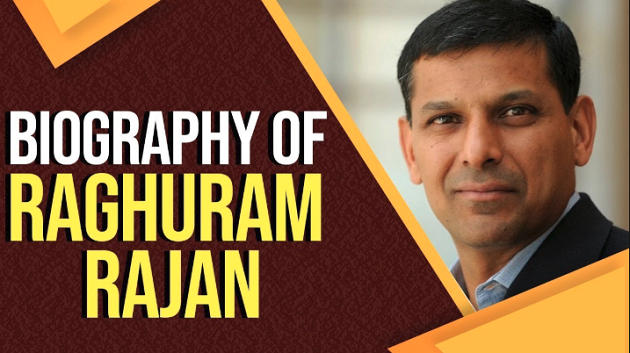Table of Contents
Topics to discuss
- FOOD-PROCESSING SECTOR
- Pradhan Mantri Kisan Sampada Yojana
- New Mega Food Parks
- PM Formalisation of Micro food processing Enterprises scheme
AGRICULTURAL EXPORTS
FOOD-PROCESSING SECTOR
A well-developed food processing sector with higher level of processing helps in the
- Reduction of wastage
- Improves value addition
- Promotes crop diversification
- Ensures better return to the farmers
- Promotes employment
- Increases export earnings.

Status of Food Processing Sector
- The sector constituted nearly 8.83% of Gross Value Added (GVA) in Manufacturing sector in 2017-18.
- Nearly 7 million persons are engaged in this sector.
- The value of processed food exports in 2018-19 accounted for about 10.69% of India’s total exports.
- The annual value of harvest and post-harvest losses of major agricultural produces at national level was at Rs.92,651 crore calculated using production data of 2012-13 at 2014 wholesale prices.

Pradhan Mantri Kisan Sampada Yojana (PMKSY)
- PMKSY was earlier named as SAMPADA (Scheme for Agro- Marine Processing and Development of Agro-Processing Clusters).
Objectives
- Creation of modern infrastructure for food processing mega food parks/ clusters and individual units
- To create robust supply chain infrastructure for perishables.
- This central sector scheme has been approved for the period of 2016-20 coterminous with the 14th Finance Commission cycle.
- Pradhan Mantri Kisan Sampada Yojana (PMKSY)
- It is an Umbrella Scheme.
Schemes under PMKSY –
- Mega Food Parks
- Integrated Cold Chain and Value Addition Infrastructure
- Food Safety and Quality Assurance Infrastructure
- Creation/Expansion of Food Processing & Preservation Capacities
- Infrastructure for Agro-processing Clusters
- Creation of Backward and Forward Linkages
- Human Resources and Institutions.

- Recently, Avantee mega Food Park in Dewas (Madhya radish) was inaugurated. This is the first food park of central India.
- Chief Minister Pinarayi Vijayan and Union Minister for Agriculture and Food Processing Industries Narendra Singh Tomar jointly inaugurated the Kinfra Mega Food Park. The ₹102.13-cr. park, State’s first such facility, to give direct jobs to 4,000 people
- Ministry of Food Processing Industries (MoFPI) launched Centrally Sponsored ‘PM Formalisation of Micro food processing Enterprises (PM FME) scheme’ as part of Atmanirbhar Bharat Abhiyan.
Mega Food Parks (MFP)
- It operates in “hub and spoke model” comprising Collection Centres (CCs) and Primary Processing Centres (PPCs) as spokes and a Central Processing Centre (CPC) as hub.
- It includes creation of infrastructure for primary processing and storage near the farm in the form of PPCs and CCs and common facilities and enabling infrastructure like roads, electricity, water etc. at CPC.
- These PPCs and CCs act as aggregation and storage points to feed raw material to the processing units located in CPC.

Significance of MFP Scheme
- The scheme intends to facilitate establishment of an integrated value chain, with food processing at the core and supported by requisite forward and backward linkages.
- The scheme aims to bring together farmers, processors and retailers and link agricultural production to the market to ensure maximization of value addition, minimization of wastages and improving farmers’ income.
- Government has so far approved 42 Mega Food Parks. However, only 18 MFPs have been operationalized.
Challenges of MFP
- The units in the MFP cannot own land and, therefore, they cannot use the land as collateral to take loans from banks.
- Delay in statutory clearances from State Government/Agencies.
- The approach of the scheme is basically ‘one-size-fit-all’ and the scheme has not been able to attract investors with different investment requirements.
- The SPVs complaints that skill levels of workers are poor and skilled workforce is not cheap.
- The awareness of the scheme is low.
PM FME Scheme
- ‘PM Formalisation of Micro food processing Enterprises (PM FME) scheme’ is a Centrally Sponsored scheme.
- Scheme has Outlay of Rs 10,000 crore with sharing mechanism as 90:10 for hilly States and 60:40 for other states

Features
- Scheme adopts One District One Product (ODOP) approach to reap benefit of scale.
- States would identify food product for a district that could be a perishable produce or cereal based product.
- It would also focus on waste to wealth products, minor forest products and Aspirational Districts.
- Support will be provided for common infrastructure and branding marketing for ODOP products
Why In News

AGRICULTURAL EXPORTS
- Recently, the High-Level Expert Group (HLEG) on Agricultural Exports set up by the Fifteenth Finance Commission had submitted its report to the Commission.
Status in Agricultural Export
- India is the second largest agriculture producer in the world and has the largest arable land of 156 million hectares.
- In 2019, India exported USD 38.7 billion of agricultural goods, which is only 7% of Indian agriculture production.
- India ranks 13th in the world in agriculture exports despite being leading producer of milk, bananas, mangoes etc.
- From 2013 to 2020, growth has slowed down relative to the impressive growth of 2009 to 2013.

Cause of Slowdown
- Low productivity due to small size of land holding
- Low mechanization
- High logistics costs
- Limited value addition: India is a more prolific exporter of primary commodities than of value-added agriculture products
- Decreasing incentives to agri exports: While India has invested heavily in a broad range of export promotion schemes such as Agriculture Export Zones (AEZ), India’s export incentives have declined over
Cause of Slowdown
- Non-tariff barriers (NTB): Indian agriculture exports also face non-tariff barriers stringent sanitary and phytosanitary (SPS) standards, residue Limits for various pesticides, antibiotics, etc in attractive markets such as Europe
- COVID 19: The pandemic has accentuated the global food and agriculture trends, which may result in decrease of agricultural exports
Agriculture Current Affairs | Free PDF Download






















 WhatsApp
WhatsApp